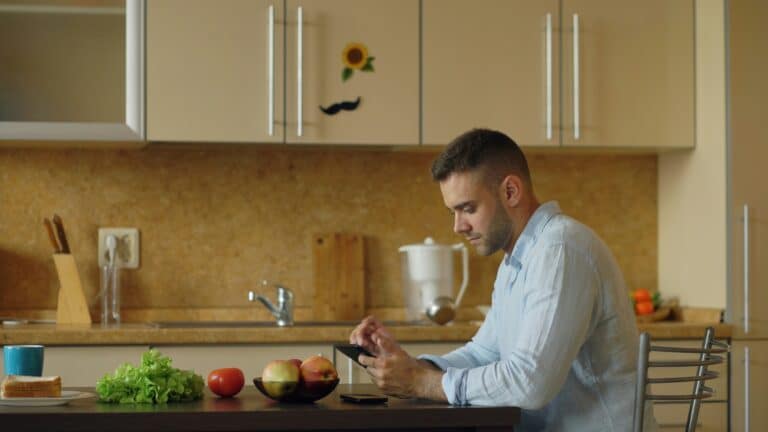Community therapy is a growing model in mental health care that breaks away from the usual clinic or office setting. Instead of focusing solely on individual sessions, it brings therapy into everyday places, neighborhoods, schools, support groups, and even online spaces, meeting people where they are. The main goal isn’t just to treat mental health issues one person at a time, but to foster collective well-being and empower groups to heal together.
What sets community therapy apart is its focus on peer support, shared experience, and practical skill-building for everyday life. It’s a team effort, often involving not just therapists, but also friends, neighbors, and others who’ve “been there.” Throughout this article, we’ll explore what community therapy really means, how it works, and why it’s such an important, and hopeful, shift in the way mental health care is delivered.
Understanding Community Therapy and Its Core Principles
Before we jump into the nuts and bolts, let’s set the stage a bit. Community therapy is rooted in the idea that healing doesn’t have to happen behind closed doors or only with a professional. It’s about reaching beyond isolated treatment, drawing on the wisdom and resilience that already exist within our communities. Whether it’s through support groups, school programs, or grassroots initiatives, the fundamental goal is to build connection, boost collective well-being, and make mental health support accessible to all, especially those who might slip through the cracks of traditional care.
This approach recognizes that mental health is affected by our relationships, cultures, environments, and day-to-day stresses, not just by what happens in therapy offices. By lifting each other up, sharing coping strategies, and supporting one another, we can create systems that empower people to thrive together. In the sections that follow, we’ll break down what community therapy really means, unpack its core principles, and highlight the role of peer support and mutual aid. Get ready for a deep dive into a model that’s both practical and full of heart.
Defining Community Therapy and Its Purpose
Community therapy is a way of supporting mental health that moves beyond the typical therapist’s office. At its core, it focuses on collective healing and empowerment, encouraging people to work together towards better mental and emotional well-being. This approach believes that everyone brings something valuable to the table, knowledge, experience, creativity, or simply a listening ear.
The purpose of community therapy is to provide practical, hands-on support in real-life environments, whether that’s a local neighborhood, a community center, or an online group. It’s designed to reach people who might otherwise be left out, bridging gaps in traditional services by meeting needs where they exist. The aim isn’t just to lessen symptoms, but to help people build the concrete skills and confidence they need to handle daily life and feel part of something bigger.
This model can be especially helpful for those facing barriers like stigma, transportation challenges, or cultural mismatches that sometimes come with formal therapy settings. Action-oriented and inclusive, community therapy encourages shared problem-solving, celebrates diverse voices, and integrates strategies that fit into everyday routines. Side by side with traditional care, or as a standalone approach, it can open the door for lasting change, see more in action at Holistic Community Therapy, which emphasizes functional change, inclusion, and real-world problem-solving.
The Role of Peer Support and Mutual Aid in Community Therapy
- Peer support offers lived experience and belonging: When folks facing similar struggles come together, they don’t just share stories—they share understanding. Peer-led groups create a safe space where it’s okay to be honest. People gain hope and practical wisdom by seeing others overcome situations they’re facing themselves, a benefit well-documented in research showing that peer support can improve engagement and recovery outcomes in mental health care (Shalaby & Agyapong, 2020). This sense of community can be especially powerful for those who feel isolated, like LGBTQIA2S+ or BIPOC individuals seeking affirming support.
- Mutual aid means everyone gives and receives support: Mutual aid isn’t charity, it’s teamwork. In these networks, people swap coping skills, resources, and advice based on real-life experience. This reciprocity builds trust and resilience, making everyone feel more capable and less alone. It shows that asking for help isn’t a weakness, but a strength people share.
- Groups become a powerful tool for mental health: Coming together in a group (in person or online) allows folks to combat social isolation and build social confidence. Research shows that group-based peer support can significantly improve well-being and personal recovery outcomes for people experiencing mental health conditions (Lyons, Cooper, & Lloyd-Evans, 2021). Meaningful connection isn’t just “nice to have” — it’s central to healing and managing daily stresses.
Community-Based Mental Health Models and Approaches
Now that we’ve laid out the core ideas behind community therapy, let’s look at the bigger picture. Community-based mental health care is all about bringing help to people where they live, work, and connect. Instead of only relying on distant clinics or traditional hospitals, these models focus on keeping care accessible, local, and part of everyday life.
Community mental health programs might be organized through local nonprofits, housing organizations, schools, or public health agencies. Some are built for flexible outreach, meeting people out in the community, at home, or through pop-up events. Others use integrated networks that combine mental health, medical, and practical support to address the whole person. Upcoming sections will break down the most widely used models, how they deliver care for those in crisis, and how they support ongoing mental wellness, showing how these approaches stack up against more conventional mental health systems.
The Community-Based Approach to Mental Health
The community-based approach to mental health delivers services where people already are, like schools, homes, neighborhood centers, or even online. This makes mental health support less intimidating and more connected to real life. These programs are built to target the barriers that keep people from getting help, things like limited transportation, stigma, or language differences.
Service providers use outreach and partnerships to establish trust and reach people who might otherwise be overlooked. By tailoring support to each person’s environment, they recognize that mental well-being is shaped by more than just symptoms; it’s tied to routine, relationships, and daily challenges. Programs stationed in familiar settings can adapt to cultural needs and focus on achievable, practical goals.
For example, mental health occupational therapy offers a functional, action-oriented approach outside the usual “talk therapy.” It can be especially effective for people dealing with trauma, ADHD, or sensory issues, helping them build skills and routines through real-world practice. Ultimately, the goal is to provide holistic, person-centered care that empowers individuals in the context of their own communities.
Assertive Community Treatment for Severe Mental Illness
Assertive Community Treatment, often called ACT, is a team-based approach tailored for people living with severe and persistent mental illness. These multidisciplinary teams are mobile and bring intensive, wraparound support right to the person, at home, in shelters, or wherever needed.
ACT teams include mental health professionals, nurses, social workers, peer specialists, and sometimes doctors, all working together. They offer help with medication, daily living skills, housing needs, and crisis management. The goal is to reduce hospitalizations and help folks stay part of their community while receiving ongoing, personalized care.
Integrated Community Healthcare Systems
Integrated community healthcare brings together mental health, physical health, and social services into one coordinated network. Rather than asking people to navigate separate providers, these systems offer “one-stop” support within the same neighborhoods or clinics.
By breaking down silos, integrated care makes it easier for individuals and families to access essential resources, from behavioral health services to preventative checkups and help with housing or food insecurity. This approach improves public health outcomes, simplifies care, and ensures that support fits the complex realities people face every day.
Key Providers and Workforce in Community Mental Health
Behind every successful community therapy program is a whole network of dedicated people. It’s not just licensed therapists or psychiatrists, you’ll find a vibrant mix of professionals and grassroots leaders working together to expand care for all who need it.
Community health workers, advocates, and occupational therapists all play a unique part. Some roles are creative or non-traditional, focused on building trust, breaking down barriers, and reaching folks who don’t easily find help in the usual places. In the coming sections, we’ll peel back the layers on who fills these roles, why their background and lived experience matter, and how occupational therapy is making waves by blending hands-on skill-building with real-life community support.
Community Health Workers and Their Impact
Community health workers (CHWs) are the trusted bridges between people and vital health resources. What makes them so effective is their deep connection to the neighborhoods they serve—they often share language, culture, or lived experience with those they support.
Research from the Agency for Healthcare Research and Quality found that CHW programs improve access to care, patient knowledge, and health outcomes across underserved populations (Viswanathan et al., 2009). By providing outreach, education, and encouragement, CHWs make it easier for people to access care, understand their options, and build trust in mental health systems. Their ability to relate on a personal level, sometimes literally walking beside people, helps close care gaps and ensures no one’s left on the margins.
Occupational Therapy in Community Settings
Occupational therapy stands out in community mental health for its focus on helping people regain practical life skills and independence. Occupational therapists work alongside clients in homes, schools, and local environments, tailoring activities to each person’s day-to-day realities.
They design creative, hands-on interventions for everything from managing routines and sensory challenges to navigating public spaces and rebuilding confidence after trauma or illness. This isn’t about talking through feelings at a desk; it’s about rolling up your sleeves and building real skills where life happens.
Whether it’s structuring a morning routine, supporting sensory regulation, or finding new approaches to executive functioning struggles, occupational therapy is flexible, inclusive, and meets clients exactly where they are. Services are accessible regardless of diagnosis, aiming to empower clients facing neurodivergence, overwhelm, or life transitions (mastering daily routines and action-focused OT are core strengths). The end game? Building confidence, self-sufficiency, and a better quality of life, right within the community.
Crisis Response and Community Care Infrastructure
Mental health crises can happen in any community, and how we respond makes a world of difference. Community therapy models don’t just wait for someone to reach out for help—they put rapid support systems right where people need them most.
From mobile crisis teams that show up on site to ongoing wraparound care plans, these approaches are designed to reduce stress, prevent unnecessary hospital visits, and promote safety. This section explores how timely intervention and coordinated community systems keep individuals supported during and after a crisis, ensuring that long-term healing stays within reach. We’ll look next at what these crisis services look like and why they matter.
Mobile Crisis Teams and Rapid Response
Mobile crisis teams are made up of trained mental health professionals who travel to the person experiencing a crisis instead of requiring them to go to the emergency room. They provide on-site assessment, de-escalation, and immediate intervention wherever the person is, at home, in public, or elsewhere.
By responding quickly and directly in the community, these teams prevent costly and sometimes traumatic ER visits or hospitalizations. Their focus on meeting people in familiar surroundings helps individuals feel safer and more supported during difficult times, allowing for more respectful and effective care.
Community Care and Crisis Support Systems
Community care models are designed to wrap ongoing support around individuals before, during, and after a crisis. These systems not only respond in the moment, but also provide outpatient therapy, follow-ups, and preventative services to boost recovery and long-term stability.
By integrating crisis response with broader mental health care, these approaches ensure that people aren’t left to navigate the aftermath alone. Ongoing support fosters a safety net where healing, prevention, and community belonging are all in reach—keeping individuals connected and empowering communities to thrive.

Community Healing Practices and Cultural Responsiveness
Healing in community therapy isn’t just about checklists and skill-building—it’s also about honoring traditions, building trust, and respecting each person’s background. Communities have long relied on group rituals and support circles to process trauma, strengthen bonds, and promote resilience.
This section uncovers how healing circles and other traditional practices are being revived and adapted to modern mental health support. At the same time, culturally responsive care is more crucial than ever, making sure help is welcoming and relevant for diverse racial, ethnic, and linguistic communities. We’ll explore what these healing methods look like, and how care providers can make sure every voice feels heard and valued along the way.
Healing Circles and Traditional Community Healing
Healing circles are group gatherings rooted in cultural traditions, where people come together to share stories, listen, and support one another. They’ve been used by Indigenous communities and other cultures for generations to foster connection and collective healing.
Within community therapy, healing circles create a safe space for people to process experiences, recognize shared challenges, and build resilience together. Instead of focusing on just the individual, they center around the group’s strength and wisdom, allowing members to learn and heal from each other’s journeys.
These circles can be incorporated into contemporary care in a way that preserves their original purpose while making them accessible and meaningful for a wider audience. By drawing on both age-old traditions and modern inclusiveness, healing circles support community ties and honor the need for collective well-being.
Delivering Culturally Responsive Care
- Language and Communication Access: Providing services in languages clients understand ensures everyone can share openly and be heard, reducing misunderstandings and increasing trust.
- Recognizing Cultural Values and Traditions: Care is adapted to respect cultural backgrounds, incorporating rituals, beliefs, and customs that resonate with clients’ sense of identity.
- Respecting Diverse Worldviews: Therapists seek out and value different perspectives, staying open-minded about how communities define healing, family, or success. This builds rapport and helps clients feel respected and included.
Structural Support: Clinics, Centers, and National Initiatives
Behind every thriving community therapy program are strong institutions, coordinated networks, and powerful advocacy groups. These structures do the heavy lifting so that front-line workers, peers, and everyday folks can keep helping one another on the ground.
Certified clinics set quality standards and create access points for all, while national associations and advocacy networks push for better funding, policy changes, and equity. This section will unpack the organizations and systemic efforts that make it possible for community therapy to reach more people than ever before, keeping the movement growing and sustainable.
Certified Community Behavioral Health Clinics and National Advocacy
- Certified Community Behavioral Health Clinics (CCBHCs): CCBHCs are federally designated clinics offering comprehensive, coordinated mental health and substance use care. They set the bar for accessibility, quality, and whole-person support across the U.S.
- National Advocacy and Support Networks: Groups like the National Council for Mental Wellbeing organize advocacy, training, and funding to expand community therapy. They fight for policies that remove barriers and boost care in every state.
Community Mental Health Challenges and Future Directions
Even as community therapy grows, real challenges remain. Stigma, funding gaps, a shortage of trained providers, and persistent inequities all stand in the way of universal access. Communities must keep innovating to reach those most in need and to overcome resource and policy barriers.
On the bright side, new approaches like digital outreach, mobile health teams, and partnerships with emergency services are expanding what’s possible. In the following sections, we’ll spotlight the ongoing hurdles, and the promising new ideas, shaping the future of community mental health care.
Addressing Mental Health Challenges in Communities
Common barriers to community mental health include stigma, lack of resources, cultural misunderstandings, and gaps in insurance or funding. These challenges can make it difficult for individuals, especially in marginalized groups—to find and stick with care.
Community-led solutions focus on education, advocacy, and building local partnerships that reduce stigma and boost access.
Innovations in Community Paramedicine and Outreach
- Community Paramedicine: Specially trained paramedics provide mental health assessments and connect people to care before crises escalate.
- Mobile Outreach Teams: Teams travel to homeless shelters, community centers, or rural areas to offer support and build trust with underserved groups.
- Digital Innovations: Telehealth, mental health apps, and virtual support groups offer accessible help for those facing mobility, distance, or stigma-related barriers.
Conclusion
Community therapy is about building bridges, between people, resources, and cultures, to make mental health support available where we need it most. We’ve explored how this model uses collective wisdom, peer support, and practical skill-building to break down barriers and foster real-life change. As more communities embrace these ideas, the future of mental health care gets brighter and more hope-filled. Want to make a difference? Get involved, support local programs, or just reach out to someone who needs an ally. Together, we can build stronger, more connected communities, one step at a time.
Frequently Asked Questions
What is community therapy?
Community therapy is a mental health approach focusing on collective healing, practical support, and peer-led interventions within everyday environments, not just clinical or office settings.
How does community therapy differ from traditional therapy?
Unlike traditional therapies that occur in offices, community therapy brings care to familiar local spaces, emphasizes group support and empowerment, and addresses barriers such as access and stigma.
Who can benefit from community therapy?
Anyone, especially those facing social isolation, underserved populations, or barriers to traditional mental health care, can benefit from this inclusive, accessible model.
How are peer support and mutual aid involved?
Peer support and mutual aid are the backbone of many community therapy models, where individuals share lived experience, offer practical help, and foster resilience together.
Are there digital options for community therapy?
Yes, telehealth, online support groups, and mental health apps now extend community therapy’s reach, making it more accessible for people unable to attend in-person services.
References
- Shalaby, R. A. H., & Agyapong, V. I. O. (2020). Peer support in mental health: Literature review. JMIR Mental Health, 7(6), e15572.
- Lyons, N., Cooper, C., & Lloyd-Evans, B. (2021). A systematic review and meta-analysis of group peer support interventions for people experiencing mental health conditions. BMC Psychiatry, 21, 657.
- Viswanathan, M., Kraschnewski, J., Nishikawa, B., Morgan, L. C., Thieda, P., Honeycutt, A., Lohr, K. N., & Jonas, D. (2009). Outcomes of community health worker interventions. Evidence Report/Technology Assessment No. 181. Agency for Healthcare Research and Quality, U.S. Department of Health and Human Services.









